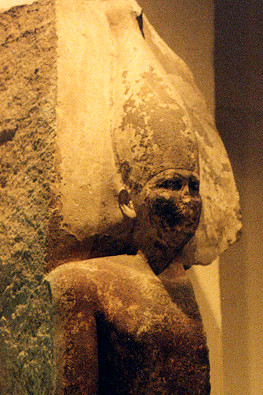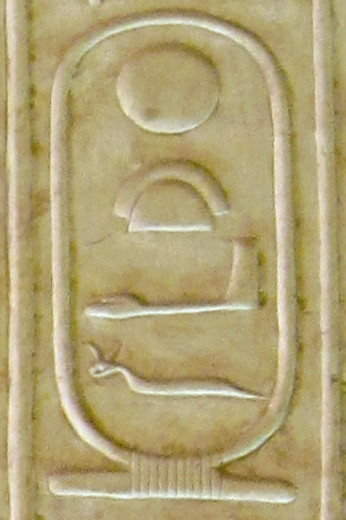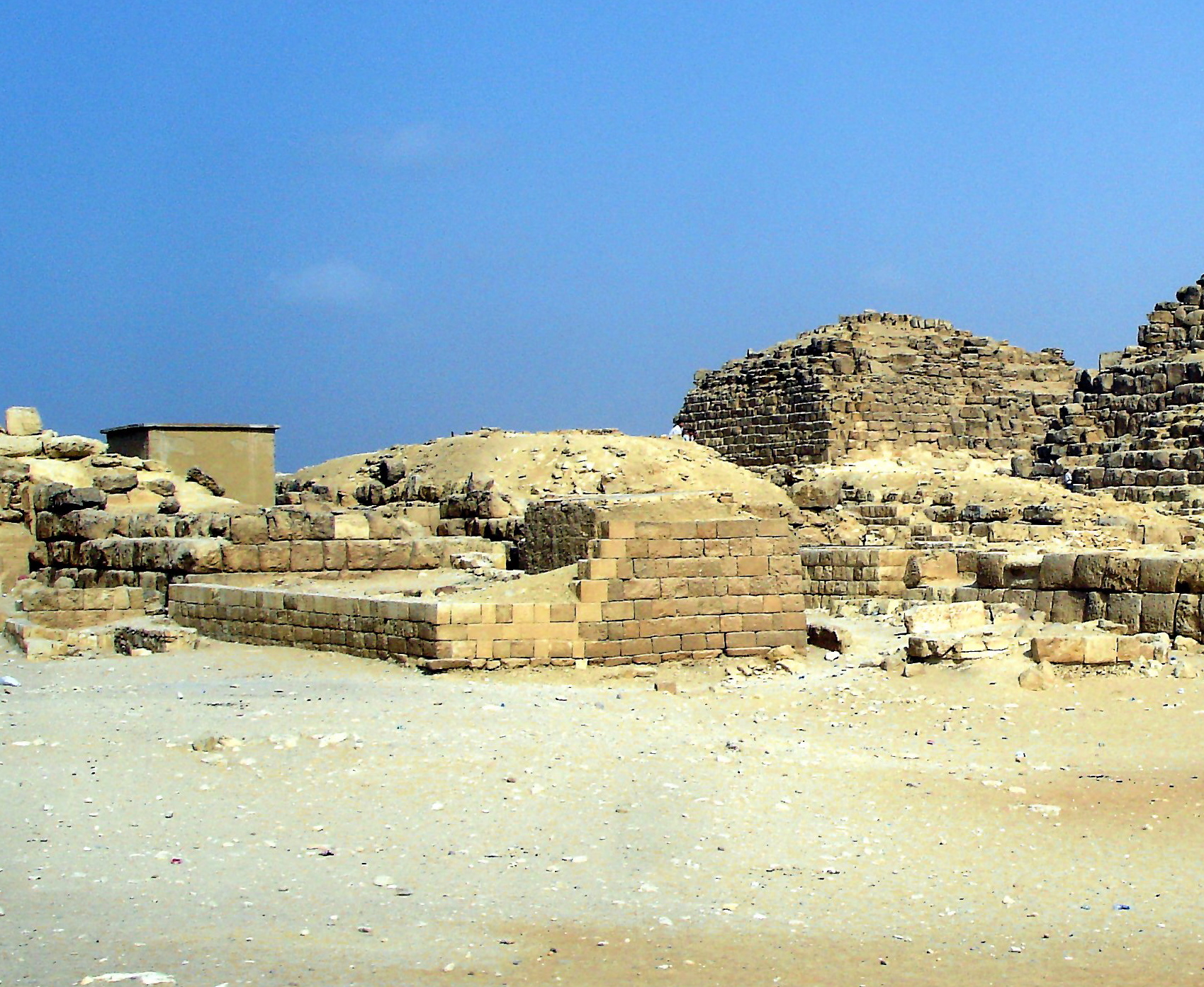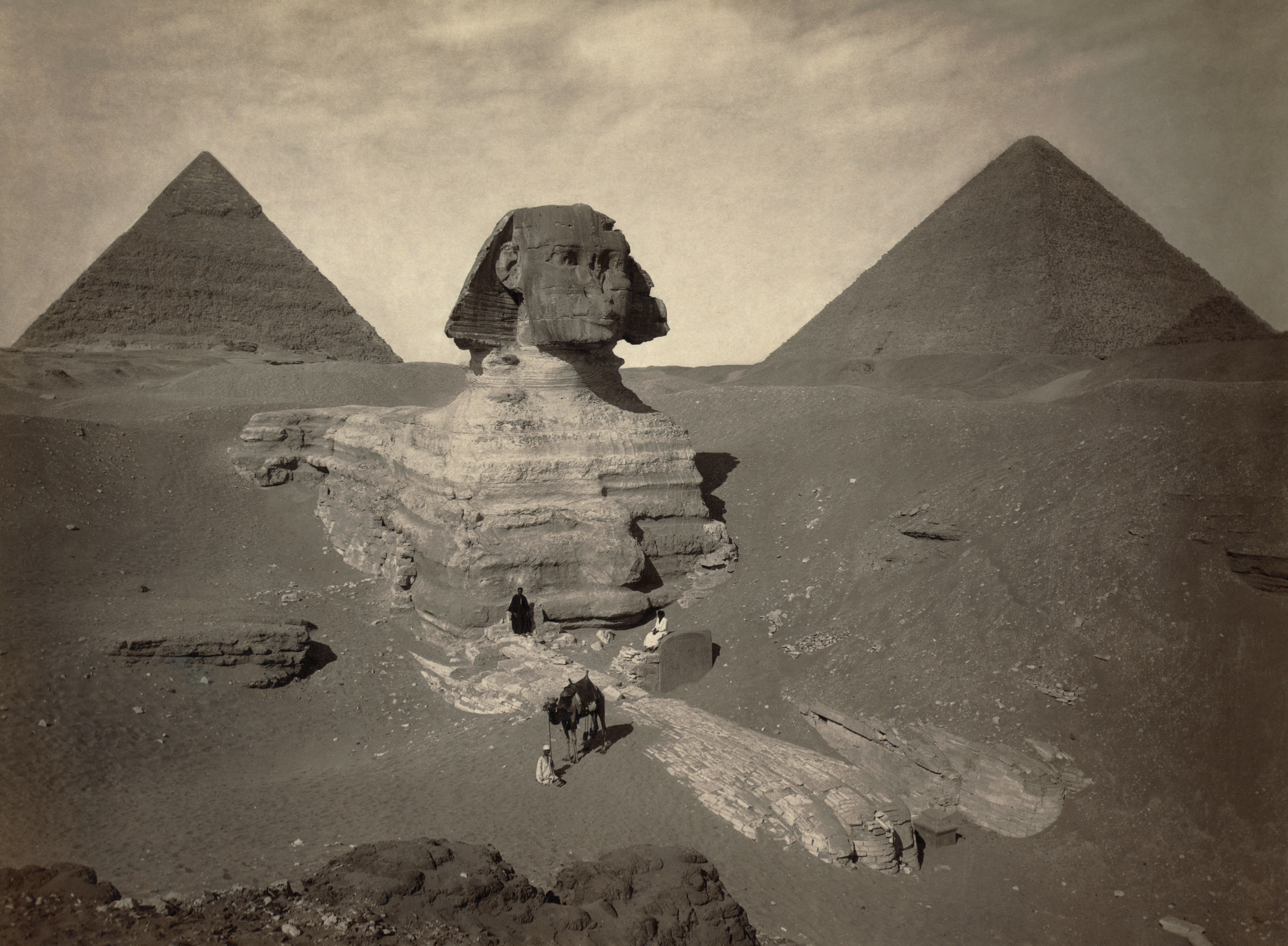|
Minkhaf I
Minkhaf I was an ancient Egyptian prince of the 4th Dynasty. He was a son of Pharaoh Khufu, half-brother of Pharaoh Djedefre and elder brother of Pharaoh Khafre., p. 60 His mother may have been Queen Henutsen.Porter, Bertha and Moss, Rosalind, ''Topographical Bibliography of Ancient Egyptian Hieroglyphic Texts, Statues, Reliefs, and Paintings'' Volume III: Memphis, Part I Abu Rawash to Abusir. 2nd edition; revised and augmented by Dr Jaromir Malek, 1974. Retrieved from gizapyramids.org Minkhaf had a wife and at least one son, but their names are not known. Minkhaf served as vizier possibly under Khufu or Khafre. Tomb Minkhaf was buried in the double mastaba numbered G 7430-7440 in the East Field, which is part of the Giza Necropolis. The construction of the mastaba started during the reign of his father Khufu.George A. Reisner, ''A History of the Giza Necropolis I'', Cambridge: Harvard University Press, 1942, pp. 70–74, Retrieved froGiza Digital Library: History of the Giz ... [...More Info...] [...Related Items...] OR: [Wikipedia] [Google] [Baidu] |
Min (god)
Min (), also called Menas, is an ancient Egyptian deities, ancient Egyptian god whose cult originated in the predynastic Egypt, predynastic period (4th millennium BCE). He was represented in many different forms, but was most often represented in male human form, shown with an erect penis which he holds in his left hand and an upheld right arm holding a Crook and flail, flail. Myths and function Min's cult began and was centered around Coptos (Koptos, modern day Qift) and Akhmim (Panopolis) of Upper Egypt, where in his honour great festivals were held celebrating his "coming forth" with a public procession and presentation of offerings. His other associations include the eastern desert and links to the god Horus. Flinders Petrie excavated two large statues of Min at Qift which are now in the Ashmolean Museum and it is thought by some that they are pre-dynastic. Although not mentioned by name, a reference to "he whose arm is raised in the East" in the Pyramid Texts is thought ... [...More Info...] [...Related Items...] OR: [Wikipedia] [Google] [Baidu] |
Fourth Dynasty Of Egypt
The Fourth Dynasty of ancient Egypt (notated Dynasty IV) is characterized as a "golden age" of the Old Kingdom of Egypt. Dynasty IV lasted from to c. 2498 BC. It was a time of peace and prosperity as well as one during which trade with other countries is officially documented. The Fourth Dynasty heralded the height of the pyramid-building age. The peaceful rule of the Third Dynasty of Egypt, Third Dynasty allowed artistic expressions to flourish. Building experiments done by King Sneferu led to the evolution of mastaba tombs into the smooth sided pyramids like those seen on the Giza Plateau. No other period in Egyptian history equaled the accomplishments achieved during the Fourth Dynasty.Egypt: Land and Lives of the Pharaohs Revealed, (2005), pp. 80–90, Global Book Publishing: Australia Rulers Summary of Listed Kings Sneferu Sneferu, lauded as "Bringer of Beauty", "Master of All Justice", and "Ruler of Lower and Upper Nile", was the first pharaoh of the fourt ... [...More Info...] [...Related Items...] OR: [Wikipedia] [Google] [Baidu] |
Khufu
Khufu or Cheops (died 2566 BC) was an ancient Egyptian monarch who was the second pharaoh of the Fourth Dynasty of Egypt, Fourth Dynasty, in the first half of the Old Kingdom of Egypt, Old Kingdom period (26th century BC). Khufu succeeded his father Sneferu as king. He is generally accepted as having commissioned the Great Pyramid of Giza, one of the Seven Wonders of the Ancient World, but many other aspects of his reign are poorly documented.Thomas Schneider: ''Lexikon der Pharaonen''. Albatros, Düsseldorf 2002, , page 100–104. The only completely preserved portrait of the king is a Khufu Statuette, small ivory figurine found in a temple ruin of a later period at Abydos, Egypt, Abydos in 1903. All other reliefs and statues were found in fragments, and many buildings of Khufu are lost. Everything known about Khufu comes from inscriptions in his necropolis at Giza pyramid complex, Giza and later documents. For example, Khufu is the main character noted in the Westcar Papyrus ... [...More Info...] [...Related Items...] OR: [Wikipedia] [Google] [Baidu] |
Henutsen
Henutsen is the name of an ancient Egyptian queen consort who lived during the 4th dynasty of the Old Kingdom Period. She was the second or third wife of pharaoh Khufu and most possibly buried at Giza. Identity Life Little is known about Henutsen's life. Some scholars believe, that she was the daughter of pharaoh Sneferu, but this is not commonly accepted. Henutsen is not known to have ever borne the title "king's daughter" or "king's bodily daughter", both titles which would have unmistakably designated her as a princess. The only document describing her as a princess is the famous Inventory Stela from the 26th Dynasty ( Saite Period). The artifact is identified by scholars as a contemporary fake created by Saitic priests, thus the information about Henutsen's royal status as a princess are questioned.Peter Jánosi: ''Die Pyramidenanlagen der Königinnen'' (= ''Denkschriften der Gesamtakademie, Österreichische Akademie der Wissenschaften'', volume 13). Vienna 1996, , p. ... [...More Info...] [...Related Items...] OR: [Wikipedia] [Google] [Baidu] |
Ancient Egypt
Ancient Egypt () was a cradle of civilization concentrated along the lower reaches of the Nile River in Northeast Africa. It emerged from prehistoric Egypt around 3150BC (according to conventional Egyptian chronology), when Upper and Lower Egypt were amalgamated by Menes, who is believed by the majority of List of Egyptologists, Egyptologists to have been the same person as Narmer. The history of ancient Egypt unfolded as a series of stable kingdoms interspersed by the "Periodization of ancient Egypt, Intermediate Periods" of relative instability. These stable kingdoms existed in one of three periods: the Old Kingdom of Egypt, Old Kingdom of the Early Bronze Age; the Middle Kingdom of Egypt, Middle Kingdom of the Middle Bronze Age; or the New Kingdom of Egypt, New Kingdom of the Late Bronze Age. The pinnacle of ancient Egyptian power was achieved during the New Kingdom, which extended its rule to much of Nubia and a considerable portion of the Levant. After this period, Egypt ... [...More Info...] [...Related Items...] OR: [Wikipedia] [Google] [Baidu] |
Djedefre
Djedefre (also known as Djedefra and Radjedef; died 2558 BC) was an ancient Egyptian king (pharaoh) of the Fourth Dynasty of Egypt, 4th Dynasty during the Old Kingdom of Egypt, Old Kingdom. He is well known by the Hellenization, Hellenized form of his name Rhatoisēs (Ῥατοίσης) by Manetho. Djedefre was the son and immediate throne successor of Khufu, the builder of the Great Pyramid of Giza; his mother is not known for certain. He is the king who introduced the royal title ''Sa-Rê'' (meaning “Son of Ra”) and the first to connect his cartouche name with the sun god Ra. Family Djedefre married his brother Kawab's widow, Hetepheres II. She was a sister to both of them, and who perhaps married a third brother of theirs, Khafre, after Djedefre's death.Dodson & Hilton, p.55 Another queen, Khentetka, Khentetenka is known from statue fragments in the Abu Rowash mortuary temple. Children with Hetepheres II or Khentetka * Hornit (“Eldest King's Son of His Body”) kn ... [...More Info...] [...Related Items...] OR: [Wikipedia] [Google] [Baidu] |
Khafre
Khafre or Chephren (died 2532 BC) was an ancient Egyptian monarch who was the fourth king of the Fourth Dynasty, during the earlier half of the Old Kingdom period (c. 2700–2200 BC). He was son of the king Khufu, and succeeded his brother Djedefre to the throne. Khafre's enormous pyramid at Giza, the Pyramid of Khafre, is surpassed only by his father's (the Great Pyramid). The Great Sphinx of Giza was also built for him, according to some egyptologists, although this remains unconfirmed. Not much is known about Khafre aside from the reports of Herodotus, a Greek historian who wrote 2,000 years later. Family Khafre was a son of king Khufu and the brother and successor of Djedefre. Khafre is thought by some to be the son of Queen Meritites I due to an inscription where he is said to honor her memory. Kings-wife, his beloved, devoted to Horus, Mertitytes. King's-wife, his beloved, Mertitytes; beloved of the Favorite of the Two Goddesses; she who says anything whatsoeve ... [...More Info...] [...Related Items...] OR: [Wikipedia] [Google] [Baidu] |
Vizier (Ancient Egypt)
The vizier was the highest official in ancient Egypt to serve the pharaoh (king) during the Old, Middle, and New Kingdoms. Vizier is the generally accepted rendering of ancient Egyptian , etc., among Egyptologists. The ''Instruction of Rekhmire'' ('' Installation of the Vizier''), a New Kingdom text, defines many of the duties of the , and lays down codes of behavior. The viziers were often appointed by the pharaoh. During the 4th Dynasty and early 5th Dynasty, viziers were exclusively drawn from the royal family; from the period around the reign of Neferirkare Kakai onwards, they were chosen according to loyalty and talent or inherited the position from their fathers. Responsibilities The viziers were appointed by the pharaohs. The vizier's paramount duty was to supervise the running of the country, much like a prime minister. At times this included small details such as sampling the city's water supply. All other lesser supervisors and officials, such as tax collectors ... [...More Info...] [...Related Items...] OR: [Wikipedia] [Google] [Baidu] |
Mastaba
A mastaba ( , or ), also mastabah or mastabat) is a type of ancient Egyptian tomb in the form of a flat-roofed, rectangular structure with inward sloping sides, constructed out of mudbricks or limestone. These edifices marked the burial sites of many eminent Egyptians during Egypt's Early Dynastic Period and Old Kingdom. Non-royal use of mastabas continued for over a thousand years. The word ''mastaba'' comes from the Arabic word (maṣṭaba) "stone bench". The Ancient Egyptian name was pr- Djt, meaning "house of stability", " house of eternity", or "eternal house". History The afterlife was centralized in the religion of ancient Egyptians. Their architecture reflects this, most prominently by the enormous amounts of time and labor involved in building tombs. Ancient Egyptians believed that the needs from the world of the living would be continued in the afterlife; it was therefore necessary to build tombs that would fulfill them, and be sturdy enough to last for an eter ... [...More Info...] [...Related Items...] OR: [Wikipedia] [Google] [Baidu] |
Giza East Field
The East Field is located to the east of the Great Pyramid of Giza and contains cemetery G 7000. This cemetery was a burial place for some of the family members of Khufu. The cemetery also includes mastabas from tenants and priests of the pyramids dated to the 5th and 6th Dynasty. Porter, Bertha and Moss, Rosalind L. B., ''Topographical Bibliography of Ancient Egyptian Hieroglyphic Texts, Reliefs, and Paintings. Volume III. Memphis. Part I. Abû Rawâsh to Abûṣîr.'' 2nd edition, revised and augmented by Jaromír Málek, The Clarendon Press, Oxford 1974PDF from The Giza Archives, 29,5 MBRetrieved February 10, 2017. The East Field consists of the three Queen's pyramids and a number of mastabas labeled Cemetery G 7000. George Andrew Reisner constructed a timeline for the construction of the East Field. The first two Queen's Pyramids, G 1a and G 1b, were likely started in year 15–17 of Khufu Khufu or Cheops (died 2566 BC) was an ancient Egyptian monarch who was the ... [...More Info...] [...Related Items...] OR: [Wikipedia] [Google] [Baidu] |
Giza Necropolis
The Giza pyramid complex (also called the Giza necropolis) in Egypt is home to the Great Pyramid, the pyramid of Khafre, and the pyramid of Menkaure, along with their associated pyramid complexes and the Great Sphinx. All were built during the Fourth Dynasty of the Old Kingdom of ancient Egypt, between . The site also includes several temples, cemeteries, and the remains of a workers' village. The site is at the edge of the Western Desert, approximately west of the Nile River in the city of Giza, and about southwest of the city centre of Cairo. It forms the northernmost part of the Pyramid Fields of the Memphis and its Necropolis UNESCO World Heritage Site, inscribed in 1979. The pyramid fields include the Abusir, Saqqara, and Dahshur pyramid complexes, which were all built in the vicinity of Egypt's ancient capital of Memphis. Further Old Kingdom pyramid fields were located at the sites Abu Rawash, Zawyet El Aryan, and Meidum. Most of the limestone used to build ... [...More Info...] [...Related Items...] OR: [Wikipedia] [Google] [Baidu] |
Canopic Jar
Canopic jars are funerary vessels that were used by the Ancient Egypt, ancient Egyptians to house embalmed organs that were removed during the mummification process. They also served to store and preserve the viscera of their soul for the afterlife. Use of the jars dates back to the Old Kingdom of Egypt, Old Kingdom and continued until the Late Period of ancient Egypt, Late Period and the Ptolemaic Kingdom, Ptolemaic Period, after which time the viscera were simply wrapped and placed with the body. Over the course of ancient Egyptian history, various changes were made to the design and style of canopic jars. Contemporaneously, canopic jars are of interest for scientific and medical research. Cinerary urns – for holding the ashes of cremated persons – with a head-shaped lid, also sometimes called "canopic", were used by the Etruscan civilization. Though these vessels are sometimes referred to as "canopic urns" or "canopic jars", their purpose and use is not related to th ... [...More Info...] [...Related Items...] OR: [Wikipedia] [Google] [Baidu] |









